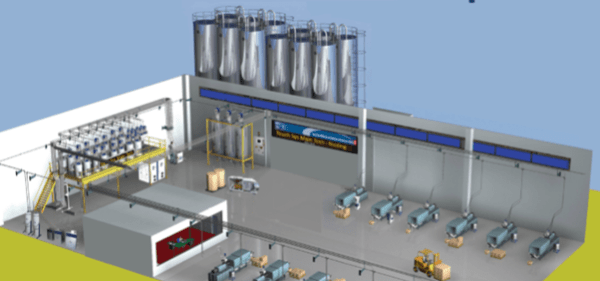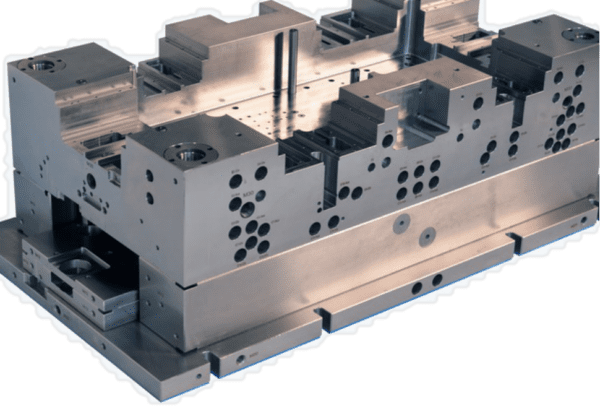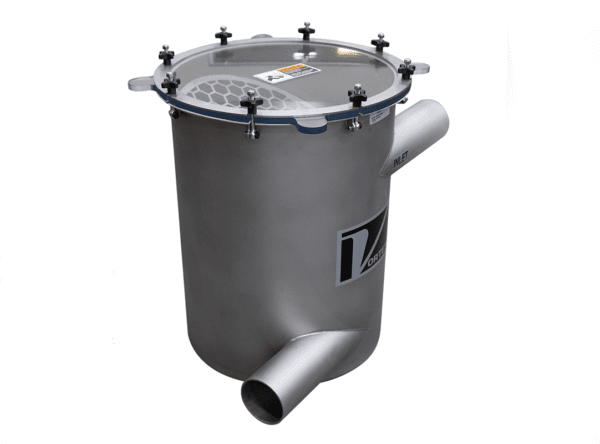
Is it Time to Consider a Centralised Material Feed System?
If your company is processing significant quantities of plastic material, it could be time to consider a centralised material handling and drying system. In this blog, PlastikCity examines the benefits of moving to a centralised system and the factors that could make such a move impractical.
Companies usually only consider significant changes to their material supply logistics and internal distribution systems when one or more of these situations arises:
- The building of a new production facility, enabling easier integration of the necessary infrastructure.
- A surge in production levels that will put pressure on the current system.
- Investigating ways to reduce material supply costs.
- Looking to increase the available production space, but don’t want to extend their current facility.
These are all valid triggers, but there is an argument that companies should review their current systems as a matter of course. After all, material and labour content are usually the two highest contributors to a plastic processor’s overheads.
We’ll start by quickly describing material distribution in a typical plastics factory:
- Goods inwards will receive regular deliveries of raw material in bags or octabins. These will be offloaded, added to an inventory and moved to a warehousing area, typically storing pallets on racking systems.
- When a processing machine is scheduled for a material change, an internal request will be raised, the material will be selected and transported to the shop floor and stock levels will be adjusted. This may involve decanting bags of material into day bins. The previous material being processed will be moved back to the material warehouse.
- A service team member will then organise any drying requirements, usually by locating a dehumidifying unit next to the processing machine. The machine’s hopper loader will then draw the material via a flexible hose.
Obviously, this system relies on a fair amount of labour, decision-making, and storage space – both on the shop floor and the warehousing area.
Conversely, centralised feed systems work in the following way:
- The majority of material is delivered in bulk form, typically using specialised tankers. This is transferred into silos that are sited outside the main manufacturing premises.
- A dedicated area of the factory is allocated to material conditioning and distribution via a system of manifolds and computer or manually controlled valves.
- A system of pipes transfers ready to use material directly to the selected processing equipment.
This may be a slight over-simplification, but the benefits are apparent.
So what are the key benefits of moving to a centralised system?
Direct savings are made through reduced material, labour and energy costs.
Material bulk buying should qualify for volume discounts and reduce delivery frequency and cost. There are also no plastic bags or cardboard packaging to dispose of.
Labour savings are numerous. Goods inwards procedures are reduced and simplified, and silos can also monitor material content by weight and flag the need for another delivery. In fact, telemetry can be sent in real-time to a nominated raw material supplier, allowing them to ensure the silo is re-filled when necessary.
Modern, automated distribution manifolds typically feature automatic material identification systems, so one person can ensure that each production machine receives the correct material when required. There is also no press-side draining, hopper and filter cleaning, refilling, or drying when changing materials.
Energy consumption for a small number of correctly utilised dryers is much lower than for individual units by each machine. Maintenance costs will also be reduced.
There can also be a significant increase in available production space!
At a basic level, storing material in silos can allow space previously allocated to material storage to be turned over to production. On top of this, moving material and drying equipment from the shop floor can typically free up around 7m2 of floor space per machine!
Improvements to the working environment and health & safety
Removing material storage and ancillary items from a production area will minimise spillages and dust production, reduce forklift truck traffic and generally result in a less cluttered environment. According to the UK’s Forklift Truck Association, around 43 people are injured each week through collisions with handling equipment.
Besides empty material bags and single-use bins being absent from the shop floor, the drastic reduction in plastic and cardboard waste will sit well with companies operating to the ISO 14001 standard.
Improved product quality and reduced scrap rates
As well as modern control systems ensuring that the correct material is delivered to the right machine, process troubleshooting is far easier when raw material is known to have been correctly conditioned.
Also proven is that centralising can be scaled and is not just for larger companies. In fact, it appears that the level of quality and cost improvement is not significantly affected by a company’s size.
So, when are centralised systems not suitable for a company?
Not all companies will benefit from a material centralised drying and handling system. At a purely practical level, not all companies will have a suitable space in their facility to create a dedicated area.
Some other scenarios include:
- You operate machines with very high throughputs. Most centralised systems will struggle to deliver more than 200 kilos per hour to a single machine.
- Your company doesn’t process many polymers that require drying. If this is the case, there may still be an argument for a silo-based distribution system.
- You only process minimal quantities of polymer, and portable drying and conveying equipment is sufficient.
- You only process one or two polymer grades, and material changes are infrequent.
Hopefully, this blog will focus on the need to consider the benefits of a centralised drying and handling system. If your company looks to be a good fit, then the next step should be to get an experienced UK based system integrator to conduct a site survey. Click here to compare quotes between suitable companies.
PlastikCity
+44 (0) 1455 209270
Website
Email






